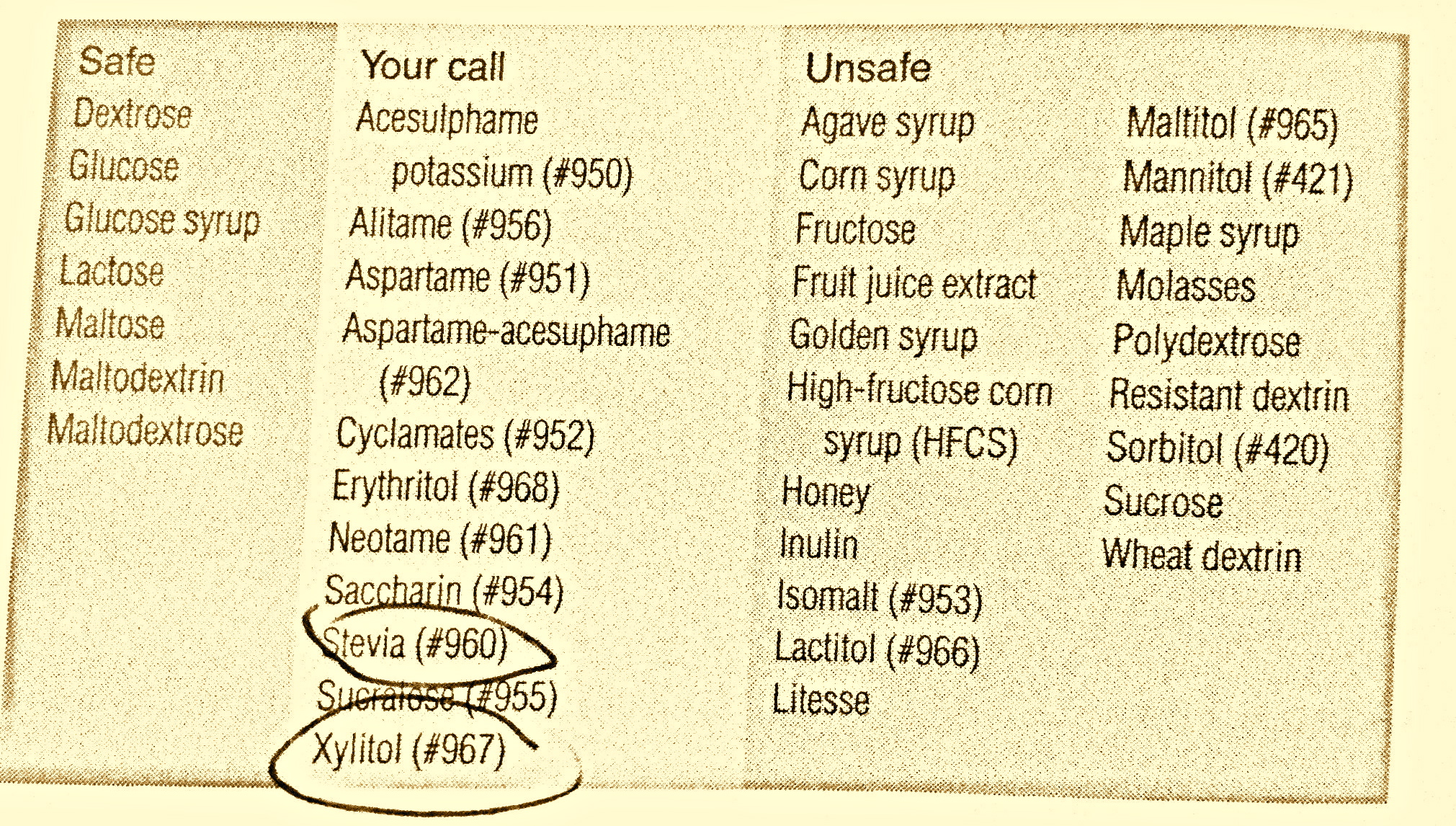Honesty corner: I’ve been trying to cheat the system and find a way to eat sugar-free chocolate. A cup of tea and chocolate at 3pm. Real tea. Fake sugar… sadly it’s tougher than the idea suggests.
I figured there had to be one out there that was OK.
The fake chocolate scenario:
- Loving Earth chocolate contains agave, which is 90 per cent fructose. Which is not what you want to be eating. Health food shops are awash with agave-sweetened, “sugar-free” products. Be very aware!
- Cocoa Farm chocolate is sweetened with Maltitol which is one of the common sugar alcohols. More on them in a minute. But note, they’re bad.
So are any fake sugars OK? Yep.
- Dextrose and glucose are both pure glucose, containing no fructose, so your body will detect it and process it.
- The “maltos” – maltodextrin and maltodextrose. These are another variant of glucose, in a longer chain of molecules. When they hit your saliva, they break down to maltose, which is digested as if it were pure glucose.
- Lactose – the sugar in milk products. Again, no fructose and surprisingly sweet once you’re off fructose.
This is a list, from David Gillespie’s “Sweet Poison Quit Plan“:
When he says “your call”, it means the jury isn’t quite out on the safeness, or there are some health issues which you might deem mild enough to ignore
Are the fake sugars really that bad?
In the “your call” column above, David has suggested you can decide if the fake sugars are something you want to go with. But I take head of fact that Saccharin, Cyclamate and Alitame are approved for us in Australia, but NOT in other Western countries like the US and Canada. This says enough! Also, check this out.
What about Stevia?
Stevia leaves contain stevioside (which is 300 times sweeter than sugar) and rebaudioside (450 times sweeter than sugar). The extreme sweetness you taste comes from the steviol. There’s no fructose. Which means it’s safe right? Well, technically, however, researchers still don’t really know what the human body does with the steviol once ingested, and whether it has any detrimental effects.
A lot’s been said about xylitol…what is it?
Xylitol is a sweetener roughly as sweet as sugar, but with about two thirds the calories. It is made by fermenting xylose, which is a sugar found in the embryos of most edible plants. Xylitol is one of two safe sugar alcohols. Our livers eventually convert xylitol to glucose, so it ultimately has no ill effect on humans. Not as nasty as the name sounds.
Surely sugar free chewing gum is alright?
Well, instead of sugar, sugar free gum contains high intensity sweeteners (like Ace K, aspartame, alitame, and sucralose) and then also a range of sugar alcohols (like sorbitol, isomalt, mannitol). These sugar alcohols are part alcohol, part sugar. What you really need to know about them though, is that our bodies can’t ingest more than a half to two thirds of a sugar alcohol. So, what doesn’t get ingested properly into your bloodstream feeds the bacteria in your large intestine, resulting in diarrhoea and gas. Which is why so many of these products warn of a ‘laxative effect’. I’d put chewy in the evil basket.
Why should we go with dextrose?
Basically it’s sugar without fructose. It’s 100% glucose. It can be bought as a powder, from your health food store. On his site, David’s put together some recipes. But he stresses: don’t start eating dextrose until you’ve withdrawn from sugar completely.
Do you have any other related questions? I’ll try to answer them, or have David Gillespie go online and do so!



